Women's weekly magazines
Women's weekly magazines developed alongside general weeklies but have survived better. For a century, they were very profitable, with sales in the millions for the biggest titles, peaking in about 1960. They have always had a very different identity to the glossy monthlies, seeing themselves as a friend and confidant of the reader. In an example of niche marketing, IPC has described women's weeklies in recent years as split into four types:- celebrity, such as Heat and Hello!;
- classic: Best, Bella, Woman and Woman's Own. The oldest magazines of this type date back at least to the Victorian era. The Family Herald was a pioneer of the mass market weekly with early use of mechanisation across the whole production pocess. They are based on 'service elements' – child care, househoild management, beauty and health, food and travel, intertwined with fashion, celebrity and real life stories;
- mature, classic titles for older women; and
- real life, based on sensational stories from readers's lives.
- fiction; and
- specialised craft titles.
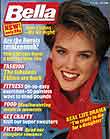 First issue of Bella in 1987. The classic format weekly shook up the UK women's weekly market and was a runaway success for its German owners
|
BellaH. Bauer, classic, 29 January 1987-Bella was Bauer's British version of US title Woman's World. As part of the launch, 2 million copies were put through doors, mainly in London. It was estimated that three weeks after the launch, Bauer was printing 1.2m copies and selling about 680,000 of them. The launch editor was Dennis Neeld and it cost 29p for 52 pages. The German magazines followed the 'left third' cover design rule so the title and cover lines can be read even if the magazines are partly covered up on newsagents' shelves. The target ABC1 demographic group is women aged 25-44 in socio-economic groups B, C1 and C2 with children.Bauer profile |
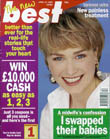 Best magazine cover. This is an April 1994 redesign
|
BestGruner+Jahr, classic, 1987-German group Gruner+Jahr, part of Bertelsmann, joined Bauer's Bella to shake up the UK women's weekly market with Best. The German magazines followed the 'left third' cover design rule so the title and cover lines can be read even if the magazines are partly covered up on newsagents' shelves.Gruner+Jahr profile |
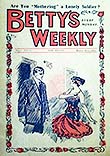 Betty's Weekly – issue 7 |
Betty's Weekly [closed]Amalgamated, 1916, 7 issuesThis weekly appears to have been merged into Woman's Weekly in 1916 after just six weeks |
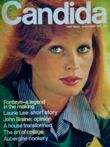 Candida magazine first issue cover
|
Candida [closed]IPC. 1972. 7 issuesShort-lived weekly from IPC that tried to move upmarket and address younger readers from the company's typical weeklies. The title was a poor idea – candida being a fungal infection that causes thrush. Although Nova was addressing that market as a monthly, it was very expensive to run – and the arrival of Cosmopolitan would kill off both Nova and NatMags' Vanity Fair. The early 1970s also saw the demise of most of the general interest weeklies because readers preferred monthlies. The trend would later destroy the music weeklies. Compare with Riva.IPC profile |
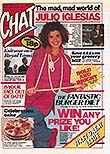 Chat – first issue cover. The colour tabloid magazine, dated 26 October 1985, was a technical innovation imported from Germany
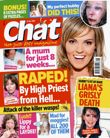 Chat – a typically busy weekly cover in 2009  It's Fate – a Chat spin-off with ‘the most personal psychic advice and the most supernatural real life stories’ It's Fate – a Chat spin-off with ‘the most personal psychic advice and the most supernatural real life stories’ |
ChatPublishing Developments (Independent Television Publications)/ IPC / TI Media / Future, 1985-Chat was launched by a division of Independent Television Publications, publisher of TV Times. It was described as the first mass market women’s weekly launched since the late 1950s. It used a German-influenced colour tabloid newspaper format with an initial print run of 1.2m copies and advertising base rates based on 750,000 sales. Launch costs were estimated at £4 million. Editor Lori Miles came from IPC's Mizz and left Chat after two years to become editor of the London Evening News in May 1987 – the first woman editor of a Fleet Street daily. However, the News was only being relaunched as a spoiler by Evening Standard publisher Associated against the corrupt Robert Maxwell's London Daily News. It closed in October after a stock market crash. Miles went into advertising but returned to magazines to launch Take a Break and TV Choice. from 2007, she worked for a spell at Cedar as the contract publisher's editor-in-chief. The launch drew on experience from the German market. ITP signed a five-year contract enabling it to draw on Axel Springer's experience with Bild der Frau. It was the start of a level of German influence on the British market not seen since the 1930s, when Stefan Lorant had brought the Continental weekly photojournalism format to the UK in the form of Weekly Illustrated and then Picture Post. In 1986, the monthly Prima arrived from Gruner & Jahr, followed by Bauer's Bella and G+J's Best in the next year. Together, these titles prompted great upheaval in the British marketplace, which would ultimately see Bauer displace IPC as the biggest publisher.At 18p, Chat was almost half the price of IPC's weeklies and aimed to be an addition to women's weekly purchases of magazines rather than replacing them. It also expected to attract women away from the Sun and Mirror newspapers. In 1989, IPC bought up ITP, taking control of both Chat and TV Times.Chat switched a standard weekly format and the target market became ‘mums and housewives’ with real-life stories, prizes, puzzles, polls, fashion, TV news and crime stories. Readers have a median age of 43. 'Chat Passion' is the overall name for monthly spin-offs including eight ‘seasonal' and five ‘best of' issues. These include:
|
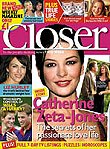 Closer magazine second issue front cover based around Catherine Zeta-Jones
|
CloserEmap Elan/Bauer, London. Celebrity. 28 Sept 2002-Celebrity weekly with television listings. The main cover line for the first issue was about Kate Winslett (why she may never marry lover Sam Mendes); George Clooney and true life stories. Second issue had Catherine Zeta-Jones as the main image alongside: 'Liz Hurley: What she really eats'. It cost £1 for 100 pages with Ian Birch as editor-in-chief and Jane Johnson as editor. Closer had a first set of sales figures of 340,000. Emap ruled it the company's most successful launch yet. It broke the 500,000 barrier in the second half of 2004 – a rise of 30% on a year earlier. A dieting and fitness website, Closerdiets, was launched in 2006.Closer website Emap profile Bauer profile |

Eva front cover
|
Eva [closed]September 14 1994. IPC. 20p trial issue.Take a Break clone. |
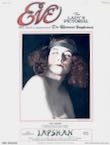 Eve magazine front cover from 21 June 1921
|
Eve [closed]The Sphere & Tatler, 172 Strand. Printed by Cornwall Press, Paris Garden, Stamford St SE1. Society weeklyEve was a high quality, large format weekly for upper-class women. It took over The Times Women's Supplement in 1921 but was itself the subect of one of the magazine world's more bizarre strategies in 1929, when it was combined with Britannia, a right-wing political weekly, to form Britannia and Eve, a monthly for men and women. |
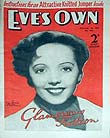 Eve's Own magazine with film star Jessie Matthews on the front cover
|
Eve’s Own [closed]Amalgamated Press. Small format newsprintThis cover from 1937 shows Jessie Matthews, 'Britain's first international film star'. But elsewhere Matthews was better known for a string of affairs (Jessie Matthews: The Diva of Debauchery by Michael Thornton). |
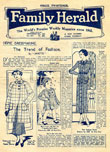
Family Herald magazine cover 1935 September 28 |
Family Herald [closed]Family Herald Press, 1842-1940. WeeklyFor most of its life, Family Herald could lay claim to the title: 'The World’s Premier Weekly Magazine', befitting its position as a pioneer of the fiction-based penny weekly formula. It was launched by the publisher George Biggs and made great use of mechanisation for typesetting, printing and binding from the outset. By the middle of the 19th century, it was claiming a sale of 300,000 a week. The price went up to 2d – but stayed at that level till it closed in 1940. However, it failed to keep up with modern production values – illustration and blue ink were limited to the cover in its 20 newsprint pages in 1935, a poor comparison with the colour gravure of Woman's Own and Woman at the same price. There was no advertising to speak of. Its editorial offices were in Crane Court off Fleet Street, and it was printed at Yorkshire Printing Works in York. Family Herald closed in 1940 with the advent of paper rationing |
 First magazine front cover
|
First [closed]Emap/Bauer. News. May 2006-2008First was a weekly news magazine for women aged 34+ that followed Emap’s success with Grazia. The title had a target of 150,000-200,000 copy sales with a £12m investment. Can be compared with Woman’s Mirror from 1959. It struggled to meet its targets and tried a relaunch with a new editor in September 2007, but that also failed. Among the contents were:
Emap profile Bauer profile |
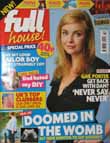 Full House magazine front cover
|
Full HouseHubert Burda Media, London. True life. 8 March 2005-40p (usually 70p); 68pp. Ed: Carl Styants Package of true life stories, celebrity, prizes and puzzles from German group. The launch of Full House was controversial among the newsagent trade because of its low cover price and the way it was sprung on newsagents witht little warning. Reported as having £9m launch budget. Backed by a nationwide TV campaign. Full House website Burda profile |
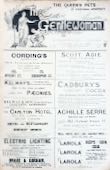 Gentlewoman cover from 1899
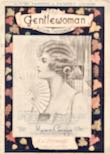 Gentlewoman colour cover in 1923 |
The Gentlewoman [closed]Printed and published by Press Printers, 69-76 Long Acre (later 70-77)The Gentlewoman was a large format society glossy founded in 1890. Like similar magazines at the time, semi-display advertising dominated the front cover. By 1922 it had started to print a colour masthead and then a colour border around cover display advertising in 1923. Liliane Hocknell produced editorial illustrations. The Gentlewoman was merged into Eve in 1926, having been relaunched as Gentlewoman and Modern Life earlier that year. |
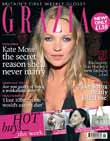 Grazia magazine front cover
|
GraziaEmap/Bauer. Fashion. February 2005-Import of Italian fashion title to finally succeed in creating a ‘glossy weekly’ after numerous failures, from Home Journal in the 1930s to Riva in the 1980s and Real. Led by celebrity covers of Jennifer Aniston, Kate Moss and Nicole Kidman for its first issues with a £16m launch budget. A week before the launch, 650,000 taster copies were given away. Emap profile Bauer profile |
 Heat magazine front cover
|
HeatEmap/Bauer. Entertainment/celebrity. 1999-Heat had a rocky start until it changed its strategy from being an entertainment weekly to a celebrity weekly. In 2003, Emap threatened legal action against any Heat copycats. Emap launched Sneak in April 2002 as a 'baby Heat' but it closed in December 2006 as the teen sector contracted. Emap profileBauer profile |
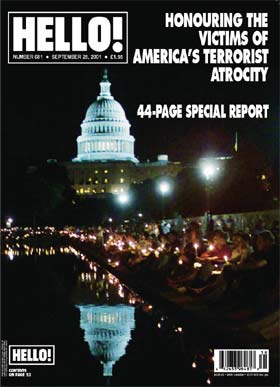 Hello! magazine front cover
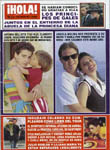 Hola! magazine front cover  Oh La! magazine front cover – French Hola! |
Hello!Hello Publishing. Celebrity. May 17 1988-Hello! is a version of Spain's royalty-driven women's weekly, Hola! Initially, it was pilloried for its fawning attitude to its interviewees, but in spawning celebrity magazines (and perhaps their controlling attitudes towards the press), its effect was to be far more wide-reaching. Has a bitter rivalry in bidding for exclusive access to celebrity weddings and events with Northern & Shell’s OK! The first issue cost 75p with Maggie Goodman as editor. The target circulation was 250,000 with a larger than A4 format, 148 pages, and ad/ed ratio of 33/67 (per cent). Hello! marked the opening of a new niche, seeing itself as 'The only Good News weekly' with an escapist format and its subjects giving aproval of the photographs. "We are bought as a treat,' Maggie Goodman told the Independent, 'like a box of chocolates.'The magazine was part of a trend for European publishers to expand into the UK ahead of the country's entry into the European Community. It was printed in Madrid but with the last editorial being flown out on Thursday afternoon to be on sale in the UK the following Tuesday.
Hello! profile |
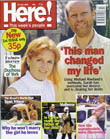 Here! first issue front cover
|
Here! [closed]Gruner + JahrGerman publisher sold Here! after seven months to IPC, which folded it into Now. Gruner + Jahr profile |
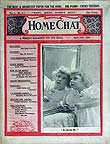
Home Chat magazine front cover in 1895 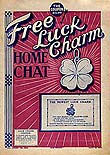 Home Chat with a lucky charm gift during the First World War 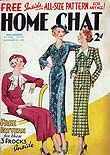 Home Chat in 1935 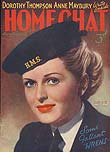 Home Chat ran this colour photographic cover in 1944 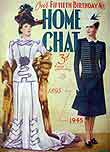 Home Chat, 24 March 1945. This issue commemorates the magazine's 50th anniversary with a cover comparing women's styles of dress between 1895 and 1945 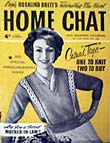 Home Chat in 1959, the year it closed |
Home Chat [closed]Alfred C. Harmsworth/Amalgamated, March 1895-1959. Small format weeklyHome Chat was founded by Alfred Harmsworth in 1895 'with the aim of producing a weekly women's journal for a penny which should be equal in the quality of its contributions, both editorial and pictorial, to any of the then existing sixpenny papers'. It was launched in response to Pearson's Home Notes and got off to an impressive start, with a 'rush' for the first issue that was 'exceptionally heavy', according to Pound and Harmsworth in Northcliffe (Cassell, 1959; p180). However, in June it was selling just 185,800 a week, a decline that Harold Harmsworth described as 'getting very serious'. Within in year, sales recovered. Leicester Harmsworth, aged 25, was in charge of the project. The target was 'new' women who 'smoked cigarettes and were becoming aggressive about the vote'. Two sisters, Maud and Flora Brown, assisted him, and Maud was later made editor, a post she held into the 1920s. According to a book published by the company, Home Chat took 'the country by storm'. 'Insistent, clamorous crowds beseiged the publishing offices, every individual anxious to make certain of supplies. The usual publishing staff, unable to deal with the crush, enlisted the services of their colleagues on the business and editorial sides. Shirt-sleeved men, perspiring but never pausing, flung the papers to the waiting crowds, which never seemed to lessen. From morning to night the work continued, and ever the paper was selling, selling, selling, and the great machines roaring as they flung out their streams of copies.' The magazine claimed that the 200,000 print run had to be topped up by 35,000 copies. It used a smaller page size (6.5 by 9.25 inches) than the 6d titles, but was just as thick. Many magazines still assumed the reader had servants, but Home Chat's recipes assumed the reader was doing the cooking. Writers included Cutliffe Hyne, Mrs M. Beeton, Lady Greville and Lady Constance Howard. Among the illustrators were Claude Shepperson, F. Pegram, W. Dewar, Hal Hurst, Warwick Goble and Louis Wain. It claims to have been the first paper to give away free dress-making patterns. Social gossip, home hints, dress patterns, short stories, recipes and competitions were the foundations for this popular women's weekly.Cover artists up to 1939 included Miriam Garden, Edgar Wilson, Hilda Cowham (who designed a sailor boy doll for the magazine in 1914), Sherie, Florence Leicester, PB Hickling, Hilda Figorski, Harding, Leslie Butler, Tony Castle and Margaret Banks. In general, it preferred photographic covers, and in the 1930s illustrations of its dress and fashion patterns. A May 1905 cover design was an early example of photomanipulation, with the image of child superimposed on a drawing of a bird as if the child were riding it. Publicity shots of Hollywood starlets were frequently used in the 1940s. Richard Dimbleby wrote a weekly column in the 1950s.In autumn 1928, Home Chat carried colour plates of Christopher Robin and Winnie the Pooh, by Ernest H. Shepard as free gifts in six of its issues. It would be 40 years before colour versions appeared in book form, and one of the coloured drawings for the magazine commission sold for £68,500 at Sotheby’s in 2013. Jungle Jinks by Mabel F Taylor was a long-running (at least 1921 to 1950) comic strip in the children's pages, led by Jacko the monkey and a menagerie of animals. Home Chat took over Woman and Home in 1918, and Woman's Pictorial in February 1956; in April 1959, Home Chat was merged into Woman's Weekly.In 1938, the sales figure for Home Chat was 127,000 copies. Sales peaked at 283,000 in 1952. |
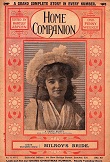 Home Companion magazine in 1897 with a 'rustic beauty' photograph on the front cover
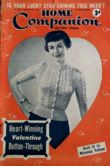 One of the last issues of Home Companion magazine in February 1956 |
Home Companion (& Family Journal) [closed]Amalgamated Press, (32 New Bridge St in 1897), 1897-1956Home Companion was launched as a popular women's penny weekly by Alfred Harmsworth in 1897. It came out on Mondays. Hartley Aspden, the editor's name, was prominently displayed on the cover until the end of 1900. In 1941 it took over the Family Journal (issue dated 7 June), probably in response to paper rationing, and continued until its last issue of 25 February 1956. Features of the early issues were the use of photographs on the cover and 'a grand story' – a long story of romantic domestic interest – inside. Amalgamated became Fleetway and was one of the companies that made up IPC. Aspden continued as editor until at least 1911 and also wrote fiction. In 1902, The Spectator reviewed The Tear of Kalee by Herbert Inman and Hartley Aspden. The reviewer notes: The joint authors, however, should have remembered that the sleep-walking concealment of a stolen jewel was Mr Wilkie Collins's private invention, and that most people have read The Moonstone. Nevertheless, readers who like a familiar plot with new variations will find the adventures of this book cleverly managed, and the interest fairly sustained The 1906 Writer's and Artists's Year Book identifies Aspden as the editor of Horner's Weekly, Horner's Penny Stories and Horner's Library as well as Home Companion, all at Carmelite House. In 1906-07, he helped edit Good Words and Sunday Magazine, an illustrated religious magazine edited since 1860 by Norman Macleod, a minister. This was acquired by Amalgamated in 1905 and was later relaunched as The Sunday Companion, lasting until 1911 |
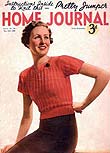 Home Journal magazine front cover
|
Home Journal [closed](Amalgamated) 28 September 1935 (216 x 298mm, stapled, 60 pages).Amalgamated took a different tack to its Newnes rival Woman’s Own in designing Home Journal by using monthly production values on a weekly. It adopted a glossy weekly format, though it used the same page size as Newnes and the same printer, Sun. At 3d, it cost 1d more than its rivals, but ran to twice as many pages and used gravure printing on better paper. Several publishers would try make the glossy weekly format work, but none would succeed until Grazia in 2005. |
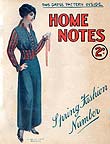 Home Notes front cover in 1915 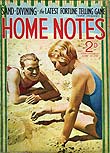 Home Notes in 1936 with colour photographic cover 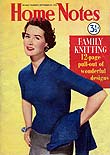 Home Notes a couple of years before the end of its life in 1956
Home Notes a couple of years before the end of its life in 1956 |
Home Notes [closed]1895-1958, C. Arthur Pearson/Newnes. WeeklyHome Notes was a popular small format women's weekly that competed with Amalgamated's Home Chat from the late Victorian era for half a century. By the 1950s Home Notes was selling almost 300,000 copies a week but was eventually taken over by sister title Woman’s Own – which was selling more than 2.5 million copies a week. |
Hot StarsNorthern & Shell, celebrityFreebie with OK! Northern & Shell profile |
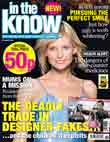
In the Know magazine front cover
|
In the Know [closed]H Bauer, news, Tuesday 29 August 2006 (50p/£1)-May 2007German publisher put £10m behind In the Know. Sample copies were given away the week before the launch with Bella and the Mail on Sunday. Its strapline was: 'For women who want more from a weekly.' The first issue was half-price at 50p with a 900,000 print run. Editor Keith Kendrick had run both Loaded and Chat. However, like Emap’s First, it struggled and closed within a year. The celebrity-free ‘topical and relevant’ weekly, aimed to carry:
|
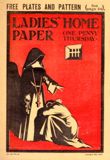 Ladies' Home Paper magazine front cover |
Ladies' Home PaperThe Ladies' Home Paper was launched in 1909 as a 'weekly journal for gentlewomen'. |
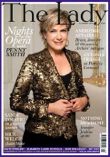 The Lady magazine front cover |
The LadyThe Lady Limited. Twice a month. 1885-The Lady was launched in 1885 by Thomas Gibson Bowles, a politician and founder of Vanity Fair (1868), for which he wrote under the byline Jehu Junior. Renowned as the magazine to turn to for the middle classes seeking a nanny in its classified advertising pages. Independently run, and still in the same family. |
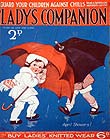 Lady's Companion in 1932 |
Lady's Companion [closed]George Newnes.This covered fashion, manners and attitudes of the age. The issue shown here measured 11 ½ inches by 8 ½ inches. |
 Look magazine front cover |
LookIPC, fashion, 2007-On 30 January 2007, 1.2 million copies were given away by IPC of Look, a celebrity-fronted street fashion weekly launch. The next week was the magazine's news-stand debut at £1.30 – 50p cheaper than Emap's Grazia. IPC's 'Project Honey' was launched with French partner Group Marie Claire, with an investment over two years of £18m. The target was to to sell 250,000 copies a week after a year on sale. The editor was Ali Hall, former More! chief. IPC describes the title as 'a mix of up-to-the-minute affordable fashion, high street shopping advice, celebrity style and gossip'. The dummy cover, left and below, looks like a cruder, more cluttered version of Grazia, with a fatter masthead typeface, clunky boxes, a similar colour palette and is far more wordy. The title was aimed at women aged between 18 and 30 who had left home but had yet to settle down. In 2013, PC was quoting a median age of 24. The website was launched in 2010. This was followed by an iPad edition. |
 Love It! magazine front cover
|
Love It!News Magazines, real life, 7-13 February 2006 (every Tuesday). 30p (60p). 68pp.Ed: Karen Pasquali Jones Whereas Bauer's Take a Break and IPC’s Chat avoided celebrities, Love It! added them to the real life mix. Rival Pick Me Up from IPC responded with half-price vouchers in the Sunday Mirror (the paper and IPC were once both part of Reed) and Nat Mags ran posters in WH Smith promoting Real People as a new magazine. News Magazines profile |
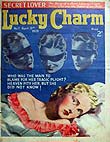 Lucky Charm magazine front cover
|
Lucky Charm [closed]15 April 1934 Fleetway no7 |
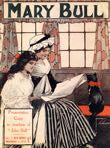 Mary Bull magazine first issue cover in 1913. It was a relaunch of Horatio Bottomley's Mrs Bull (below)
| Mary Bull [closed]Odhams Ltd, 93-4 Long Acre, London. Editorial offices: 67 Long Acre. 1913-1915New series (ie relaunch) of Mrs Bull. 1d. 48+4pp. The first issue appears to have been given away with John Bull (as on cover: 'Presentation copy to readers of John Bull'). The cover was by Lawson Wood. The British Library lists Mary Bull as being published from 1 March 1913 – 27 March 1915. |
 Me magazine first issue cover dated 19 June 1989
| Me [closed]GE Magazines /IPC, Garden House, 57-59 Long Acre. Printed by BPCC Chromoworks, Nottingham. Cover printed by Impact Litho, Basingstoke. 1989-1995‘It’s all for you’ was the strapline for the first issue of this weekly, which had an initial circulation of 1.2 million copies. The leading cover line was ‘Why I want to be a man’, pluggingan interview byy Penny Vincezi with Joan Collins. Me was put together in response to the launches of Gruner and Jahr's weekly Best and monthly Prima. The editor was Liz Glaze and the art editor was Sue Walsham. Me closed in January 1995 with sales of about 230,000 copies a week. IPC profile |
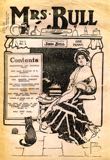 Mrs Bull magazine first issue cover in 1910. It was a spin-off from John Bull 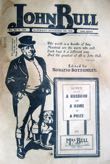 Mrs Bull magazine promoted on cover of John Bull in 1911 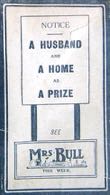 Detail of Mrs Bull advert on John Bull cover |
Mrs Bull [closed]Odhams Ltd, 93-4 Long Acre, London. Editorial offices: 67 Long Acre. 1910-1913Mrs Bull was launched as a ‘companion journal’ to Horatio Bottomley’s patriotic weekly magazine John Bull. The first issue was dated 29 October 1910. The launch was funded by the company issuing preference shares. The cover by Lawson Wood shows Mrs Bull at the side of the blazing kitchen range with a pot of tea. She is knitting a Union Jack, while her cat watches her ball of wool on the floor. |
My Queen Library [closed]Aldine Publishing, fiction, 1896-1914Aldine specialised in penny fiction weeklies for youngsters and adults, here in the form of romantic fiction. A rambling rose is intertwined around the title and frames the crude letterpress image. |
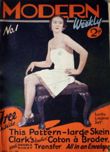 Modern Weekly magazine first issue front cover 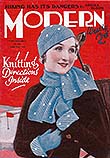 Modern Weekly magazine in 1932 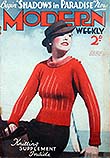 Modern Weekly magazine in 1936 |
Modern Weekly [closed]Amalgamated. April 1926-1936Closed and relaunched as Woman’s Illustrated |
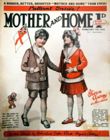 Mother and Home magazine front cover (February 1915)
|
Mother and Home [closed]Amalgamated, weekly (later monthly) 1909-195?By September 1937, Mother and Home had taken over Weldon's Bazaar of Children's Fashions and become a monthly. |
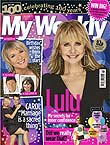 My Weekly magazine front cover
|
My WeeklyDC Thomson, Dundee. Traditional, April 1910-Centenary issue DC Thomson profile |
|
New!Northern & Shell, celebrity, March 2003,London. 60p; 68 pages. Editor: Kirsty MouattCut-price 'celebrity action' from publisher of OK!, the Express and Star daily newspapers, as well as top-shelf magazines. Heat ran a spoiler in the same week, launching a stapled-in gossip magazine called Ooh! Scandal! Both magazines ran Victoria Beckham, Posh Spice, on the cover Northern & Shell profile |
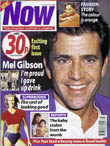
Now magazine front cover
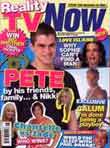 Now magazine spin-off Reality TV front cover |
Now [closed]IPC / TI Media / Future, celebrity, 1996-Australian-born actor Mel Gibson was on the first cover. Took over Gruner + Jahr’s Here! In 2006, IPC has put out several spin-offs from its gossip weekly, including Nowmagazine.co.uk and a series of specials, including Reality TV Now, Teen Now (6 times a year), Diet Now and Style Now. IN 2006, it also launched a book, Celebrity Passions. Target market is ABC1 women with a median age of 28 As well as the website, there are UK, international and North America iPad editions. Under Future, Now Daily (celebsnow.co.uk) website grouped under fashion and celebrity portal. IPC profile |
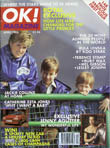 OK! magazine front cover – first issue of the monthly launch
 OK! magazine front cover with Joan Collins, one of the biggest cover stars for 50 year on the first weekly cover 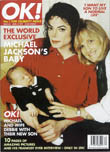 OK! magazine front cover – the weird world of Michael Jackson and his baby |
OK!Northern & Shell. Celebrity. Monthly/weekly. April 1993-Richard Desmond had started with International Musician in 1974 to build Northern & Shell into a pornographic publishing empire with the franchise for Penthouse and more downmarket men's titles such as Asian Babes. There were faltering attempts to move into the mainstream, buying titles such as Running and Venture UK but these had little success until the launch of OK! in April 1993. This was at first a large format monthly competing with weekly Hello! A 16-page preview was distributed with the Sunday Express (one of papers N&S was to take over in 2000). OK! was taken weekly by ex-Woman's Own, TV Times and BBC/Redwood editor Richard Barber in March 1996. Northern & Shell profile |
Ooh! Scandal! [closed]Heat ran a spoiler in the same week, launching a stapled-in gossip magazine called Ooh! Scandal! Both magazines ran Victoria Beckham, Posh Spice, on the cover.Emap profile Bauer profile |
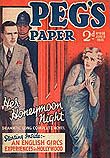 Peg's Paper cover 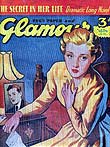 Peg's Paper and Glamour with the stress on Glamour |
Peg’s Paper [closed] |
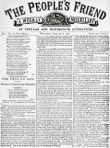 People's Friend magazine first issue cover |
People's FriendDC Thomson, 1869-Began as ‘a weekly miscellany of popular and instructive literature’ and evolved into ‘the famous story magazine’. The front covers are usually illustrated landscapes, although it does break into photography for royal subjects. DC Thomson profile |
 Pick Me Up magazine front cover |
Pick Me UpIPC / TI Media / Future, real life, Thursday, 20 January 2006June Smith-Sheppard moved over from the editorship of Chat to launch 'Project Spitfire'. IPC Media said it gave away 3.5 million copies with Woman, Now, Chat and What’s on TV, in what it claimed as the biggest sampling exercise yet seen in the UK. The company claims £6 million has been committed to marketing Pick Me Up in 2005 with a national TV campaign. ‘Mums and housewives’ with a median age of 32. Special issues each year based on the magazine’s contents includes nine seasonal issues and four ‘best-ofs. There are iPad editions for both the magazine and the specials with UK and North American versions. IPC Media profile |
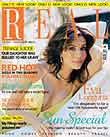 Real magazine front cover |
RealBauer/Essential/Burda, glossy fortnightlyBauer, a German group, had launched Real as a glossy weekly, but sold the title in 2004 to Essential, which was taken over by Full House publisher Burda, another German company, in 2006. In August that year, Essential settled a legal challenge from HFUK that had lastedd 3 years. Then, Real had changed its masthead – and HFUK claimed it was too similar to its monthly Red. Essential had to pay HFUK’s costs, estimated as being up to £1 million. Bauer profile |
 Real People magazine front cover |
Real PeopleACP-NatMags, real life, January 2006The joint venture company formed by Best owner National Magazines and Australia's ACP put a £6m marketing budget behind codename Project Star to launch as Real People. |
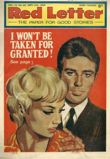 Red Letter cover |
Red LetterFiction |
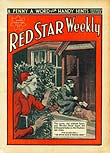 Red Star Weekly cover |
Red Star WeeklyDC ThomsonDC Thomson profile |
 Reveal magazine front cover |
RevealNational Magazines/ACP-NatMagsNatMags had taken over Best – its first weekly – and monthly Prima from Gruner & Jahr when the German publisher quit the UK in 2000. Reveal was launched with a £16m campaign to add bulk to the weekly offering. Also, the supermarkets, which had become a powerful force in magazine publishing, wanted the higher turnover that weeklies offered. In 2004, NatMags formed ACP-NatMags, a partnership with Australian Consolidated Press to produce its weekly magazines in the UK. |
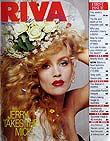 Riva magazine front cover 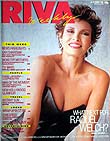 Riva magazine front cover |
Riva [closed]13 September-25 October 1988. Carlton / IPC, weekly. Ed: Sally O'SullivanCarlton's Riva aimed to have ‘the pace of a weekly with the gloss of a monthly’. Cost 50p and first issue had model Jerry Hall (Mick Jagger's girlfriend) on cover. At £7.5 million, the launch budget was then the largest in Britain. (Bauer's weekly Bella had cost £5m the previous year.) Riva was part of a response by Carlton and IPC owner Reed to incursions in the previous year – Marie Claire to compete with Elle and Vogue at the top end of the fashion market; Essentials, a practical monthly up against Prima; and Riva facing Best and Hello!. IPC Media profile |
 Star magazine cover from 2011 |
StarNorthern & Shell, 8 November 2003, celebrity, £1.50; 196pp. Ed: Martin SmithA weekly magazine based on the celebrity-driven, downmarket strategy of the company’s daily newspaper, the Star, which has been one of the few papers to show much of a sales growth in recent years. Cover choice of Jade Goodey, from the Big Brother TV series. Northern & Shell profile |
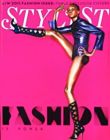 Stylist magazine, a free weekly |
StylistFree weekly. |
Take 5Northern & Shell, TV listings, 2005OK! and Daily Express publisher Northern & Shell launched this cheap woman-focused TV listings title but it did not last long. 11-17 March issue. Northern & Shell, London. 60p; 24pp. The print run is 250,000, with a sales target of 150,000. Northern & Shell profile |
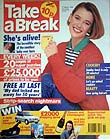 Take A Break magazine first issue front cover. The cover photo was by Jeany Savage |
Take A BreakBauer Publishing, classic, 17 March 1990-Lori Miles was launch editor for Take A Break, which was sold for 10p in its first two weeks (35p after that; 56 pages on Thursdays). It was printed by Druck in Cologne. The editorial strateegy was 'all about enjoyment, not changing your life'. It was full of puzzles and prizes alongside articles on real life, fashion, beauty, food, home and travel. The target market is C1C2 women aged 25-55 with children. Monthly spin-offs include:
|
 Take It Easy! cover |
Take It Easy!Free magazine with the Sunday PeopleCompare the design with paid titles such as Pick Me Up! |
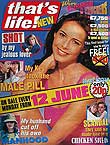 Front cover of a free sampler for That’s Life magazine |
That's LifeH Bauer, real life, 5 June 1995 (Thursdays)-That's Life aimed to sell to 30-something women using the most popular elements from Bauer's other weeklies, Take a Break and Bella, such as true-life stories, fashion, beauty and recipes. Prizes for competitions were set at £13,000. Some four million 40-page sample copies were distributed with Take a Break, TV Quick and Bella. After the sample, the first issue was priced at 20p and later editions cost 42p. Only two of the first issue's 56 pages were allocated to advertising. Bauer set a launch print run of 1.5 million – shipped in from Germany – which was expected to settle down at 500,0000. The target market is young mass-market women with children. |
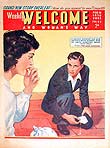 Woman’s Welcome magazine front cover |
Weekly Welcome [closed]Fortnightly |
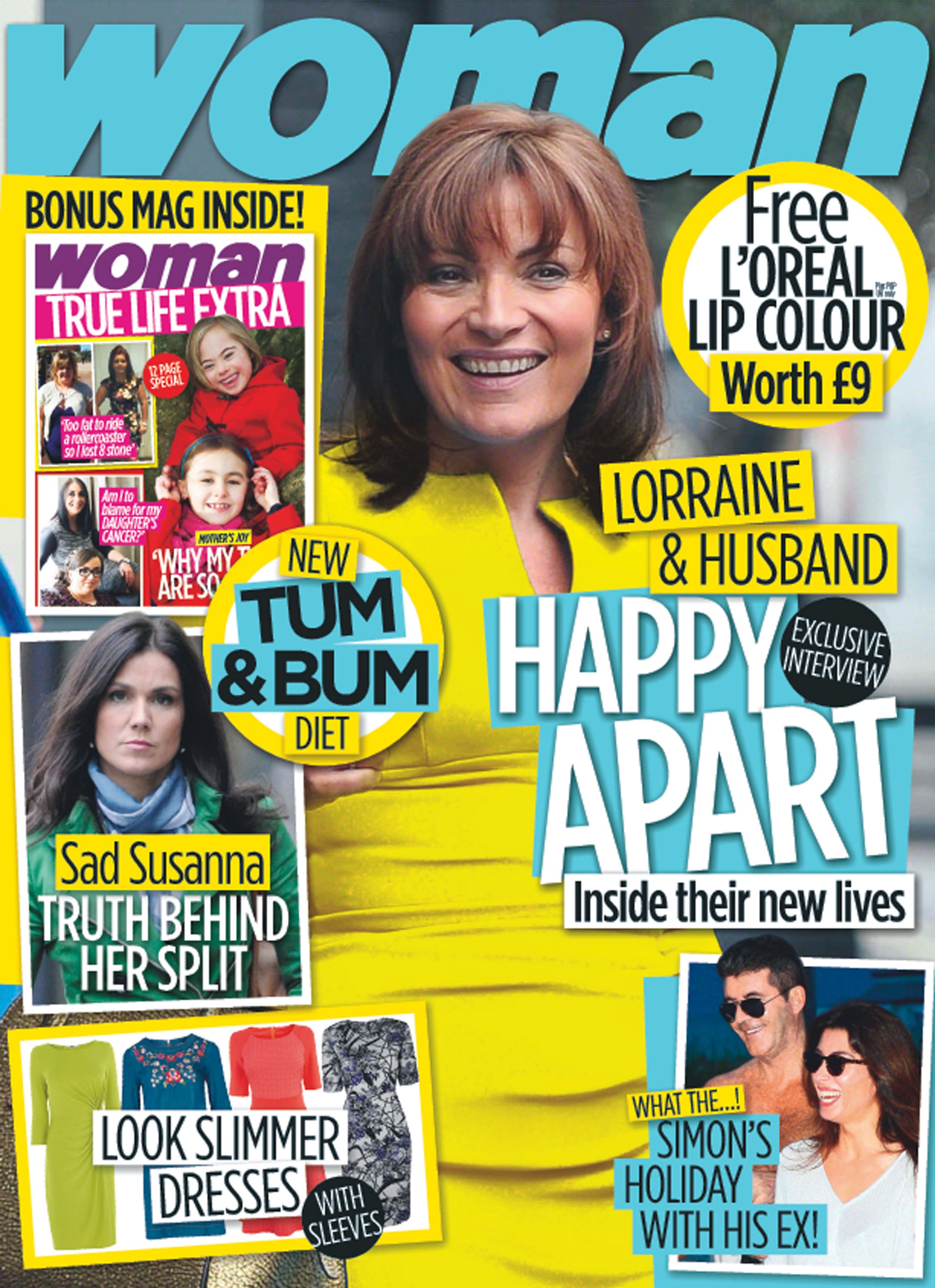 Woman cover in early 2014 |
WomanOdhams / IPC / TI Media / Future, 1937-Since its launch, Woman has competed with Woman's Own (Newnes) and Woman's Weekly (Amalgamated) to be the top-selling title. The three great rivals ended up as sister titles when their companies merged to become IPC. Their sales peaked in about 1959, at about 2.6m, 3.1m and 1.8m each. IPC describes its readership as 73% ABC1C2, with a median age of 54. Its sales were about 250,000 copies a week at the start of 2014, with two readers per copy according to NRS data. |
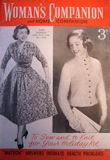 Woman's Companion magazine front cover (1956) |
Woman's Companion [closed]Odhams Press / IPC / TI Media / Future, 1927-61?, classic.The ‘journal of beauty’ is how Odhams regarded Woman's Companion in 1938. The issue shown here is from February 1938 (232 x 300mm, stapled, 80 pages, 6d) when it was based at Martlett Court in London’s Covent Garden. By 1956 it had absorbed Home Companion and was published on Thursdays using much lower production values and a smaller format (190 x 277mm). It printed a ruler vertically on the back cover alongside the advert. Odhams was one of the companies that merged to form IPC in the early 1960s. |
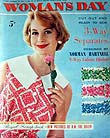 Woman’s Day magazine front cover for the first issue |
Woman's Day [closed]George Newnes, classic, 22 March 1958-late 1961Sun Printers in Watford produced all the big run magazines for Newnes. It cost 5d for 62 pages and came out on Tuesdays. Colour was used on the centre spread for knitting patterns. There was also a colour reader offer: perfume for 1/9. A pull-out knitting booklet occupied the centre eight pages. There was also a 16-page gift ‘book’ on DIY. Later, Woman's Day carried a column by the prolific romantic fiction writer Barbara Cartland. It sold 900,000 copies a week in its first year. Newnes was one of the companies that merged to form IPC in the early 1960s. |
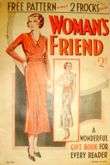 Woman’s Friend magazine front cover for 28 October 1933, when it cost 2d for 52 pages |
Woman's Friend [closed]Pearson’s (Newnes), classic, 1924-50Women's Friend was published by Pearson's from its Henrietta Street offices in London's Covent Garden. Pearson's was controlled by George Newnes but the companies were run separately, though the printing was combined into Newnes & Pearson Printing, based in Exmoor St, Ladbroke Grove. In the mid-1930s, Newnes tried to buy Sun Printers but set up its own print works in Watford, Herts, in 1937 after it had been rebuffed. The Art Deco Odhams works is still a print plant to this day, although the Sun site – probably the biggest in the world in the 1930s – has been demolished. Women's Friend was a downmarket title with poor production values compared with Woman's Own and Woman. Odhams/Newnes was one of the companies that merged to form IPC in the early 1960s.IPC Media profile |
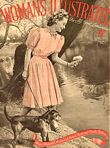 Woman's Illustrated magazine from 1946 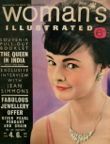 Woman's Illustrated magazine from 1961 |
Woman's Illustrated [closed]Amalgamated, illustrated, 1936-1961?Woman's Illustrated incorporating Modern Weekly at its launch and set out to be 'Everything for every woman'. It came out every Friday and followed the weekly pattern of colour cover and centre spread in thhe 1950s. Sales peaked at about 800,000 in 1960. Amalgamated was one of the companies that merged to form IPC in the early 1960s. |
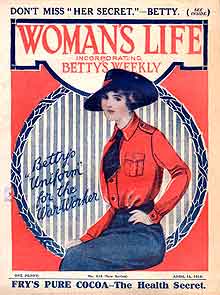 Woman’s Life magazine front cover in 1916 showing a ‘uniform’ for the war-worker 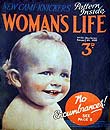 Woman’s Life magazine front cover in 1926 |
Woman's Life [closed]George Newnes, 1895-34Woman's Life took over Betty's Weekly in 1914 but was itself merged into Woman’s Own in 1934. Newnes was one of the companies that merged to form IPC in the early 1960s. |
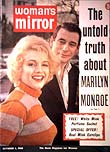 Woman’s Mirror magazine front cover  Woman’s Mirror magazine front cover 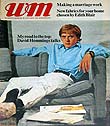 Woman’s Mirror magazine front cover Woman’s Mirror magazine front cover
|
Woman's Mirror [closed]Fleetway, 1960-67. News weeklyWoman's Mirror was a product of the takeover of Fleetway by Mirror Group. It was 'The news magazine for women', with 72 pages in its first issue, which featured a Marilyn Monroe cover and 4 pages inside by Maurice Zolotow alongside a Cecil Beaton photograph. Also in the issue was a colour centre spread of Japanese pearl-divers – who later featured in the You Only Live Twice Bond film. In 1967, it was merged into sister title Woman. Fleetway was one of the companies that merged to form IPC in the early 1960s.IPC Media profile |
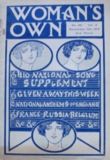 Woman’s Own magazine from 1914 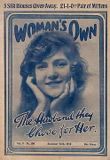 Woman’s Own magazine from 1916 with photographic cover |
Woman's Own [Horner – closed]W.B. Horner 1914-1920?Compare with Newnes/IPC title of the same name launched in 1932 IPC Media profile |
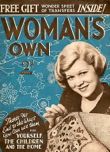 Woman’s Own magazine from 1933  Woman’s Own cover in early 2014 |
Woman's OwnGeorge Newnes / IPC / TI Media / Future. 1932-Woman’s Own began using gravure supplements in the early 1930s, calling itself ‘The family favourite’, and then ‘the world’s finest weekly paper’ when it switched to colour gravure in 1937. Since the late 1930s, Woman's Own competed with Woman (Odhams) and Woman's Weekly (Amalgamated) to be the top-selling title. The three great rivals ended up as sister titles when their companies merged to become IPC. Their sales peaked in about 1959, at about 3.1m, 2.6m and 1.8m each. IPC describes its readership as 71% ABC1C2, with a median age of 51. Its sales were about 225,000 copies a week at the start of 2014.Womansown.co.uk website later subsumed under Good to Know branding with other weeklies. IPC Media profile |
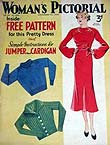 Woman's Pictorial cover from 7 March 1936 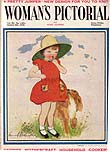 Woman's Pictorial cover from 6 October 1945 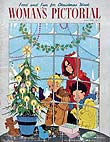 Woman's Pictorial from 19 December 1953 Woman's Pictorial from 19 December 1953 |
Woman's Pictorial [closed]Amalgamated Press, Fleetway House, London EC4. 56+4pp.3d. outer cover colour onlyIn 1953, it ran recipes by Elizabeth Craig. Amalgamated was one of the companies that merged to form IPC in the early 1960s. IPC Media profile |
 Woman's Realm magazine front cover 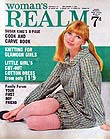 Woman's Realm magazine front cover 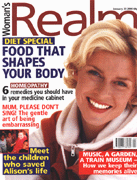 Woman's Realm magazine front cover from |
Woman's Realm [closed]Odhams Press / IPC / TI Media / Future, classic, 22 February 1958-2001Launched in 1958 and merged with Woman's Weekly in 2001. Included double-page spread promoting 'merger' with 3 coupons worth 32p off next 3 issues of Woman's Weekly, which itself carried reader gifts: Morse audio book; picture frame and handcream. Both titles had seen 15% circulation falls in a year. Strategy was for older readers to go with the merger while younger ones gravitated to new launch Your Life. Interestingly, April 10 issue masthead had the 'm' covered over, making it look like a spoiler for the launch of Real. 24 April was the last issue as the editor was Mary Frances. IPC Media profile |
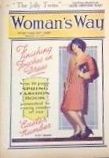 Woman's Way cover from 1929 |
Woman's Way [closed] |
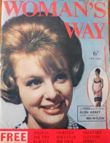 Woman's Way cover from 1963 |
Woman's Way (Ireland)[closed]Ireland |
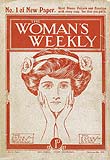 Woman's Weeklymagazine front cover 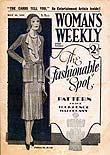 Woman's Weekly magazine front cover 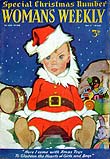 Woman's Weekly magazine front cover 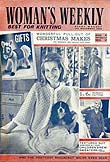 Woman's Weekly magazine front cover  Woman's Weekly magazine front cover 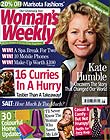 Woman's Weekly magazine front cover
Woman's Weekly magazine front cover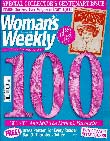 Woman's Weekly celebrated its centenary by giving away a reproduction copy of the first issue
Woman's Weekly celebrated its centenary by giving away a reproduction copy of the first issue |
Woman's WeeklyAmalgamated Press/ IPC / TI Media / Future. 1911-Since the late 1930s, Woman's Weekly competed with Woman (Odhams) and Woman's Own (Newnes) to be the top-selling title. The three great rivals ended up as sister titles when their companies merged to become IPC. Their sales peaked in about 1959, at about 3.1m, 2.6m and 1.8m each. IPC describes its readership as 66% ABC1C2, with a median age of 62. Its sales were about 307,000 copies a week at the start of 2014 – meaning it had overhauled the other two since 1960. IPC has launched iPad, international and North America editions as well as fiction, knitting and craft print specials. Woman's Weekly celebrated its centenary in 2011 by giving away a reproduction copy of the first issue. Magazine collectors should be wary of these being passed off as original issues.IPC Media profile |
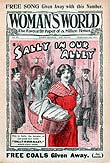 Woman's World magazine front cover (27 February 1915) 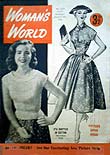 Woman's World magazine front cover |
Woman's World [closed]Amalgamated, traditional, 1905?-1956?The favourite paper of a million homes. Every Monday ‘Sally in our alley’ by H. Gregory Hill cover Send in 6d for a horseshoe to send to troops First stanza is from a poem by Henry Carey 1687–1743. Poem is set to music on p177. The lyrics are:
Advert in text for ‘The family favourite’ with a free wishbone button with No 2. 1d There was also a monthly glossy called Woman's World (1978-1990). Amalgamated was one of the companies that merged to form IPC in the early 1960s. |

You magazine first issue cover of Angelie Jolie (7 March 2006) |
You (Mail on Sunday)Mail on Sunday supplement, 7 Mar-14 Aug 2006The fact that Daily Express owner Richard Desmond had been so successful with OK! and that Rupert Murdoch’s News International had launched Love It!, may have been the spur for the Daily Mail to try to launch its supplement as a paid-for magazine costing £1. The paper was selling 2.3m copies every Sunday at the time. You appeared on news-stands on Tuesdays with a glossier cover and a circulation of 50,000 as part of a £7m revamp of the supplement. The idea was to attract new women readers to the Mail on Sunday by sampling the magazine. You had been a big success as a supplement for the Mail on Sunday – credited with saving the paper after a faltering launch – but only lasted six months as a paid-for standalone magazine. The supplement carried on, and the magazine investment was diverted into the paper's website. Mail on Sunday profile |

Your Life launch issue cover promoted Twiggy's involvement |
Your Life [closed]IPC, 2001Replacement for Woman’s Journal. 'Your Life – Live It Up'. Target ABC1s aged 35-60. Better production values than Woman's Realm with heavier cover (though still varnished rather than laminated). Launch supported by a celebrity-based, £2m five-week marketing campaign featuring 1960s model Twiggy with press and radio advertising and point-of-sale material. However, Your Life failed to gain readers as they switched from more traditional women’s genres to celebrity launches. IPC Media profile |


